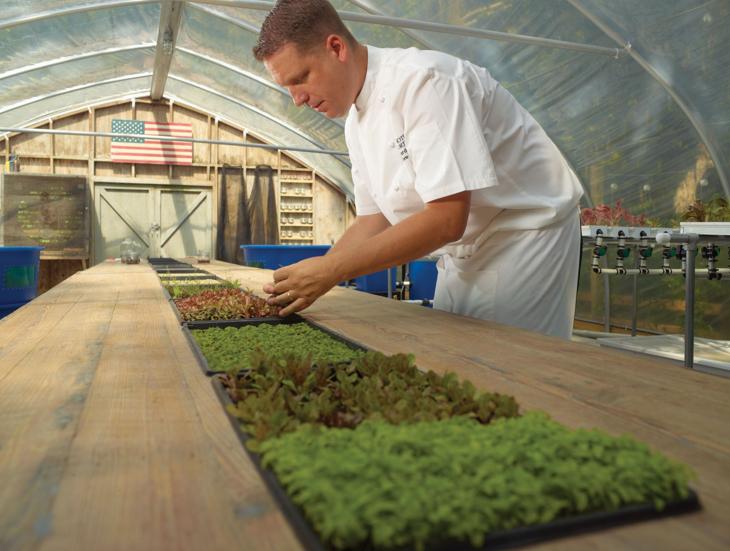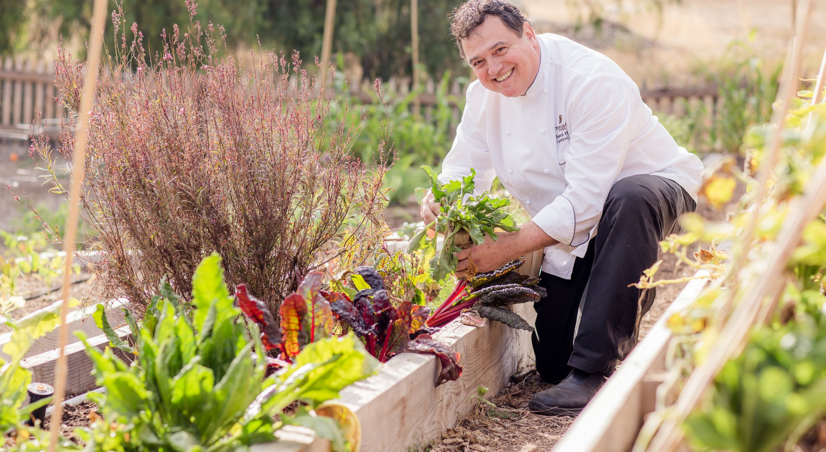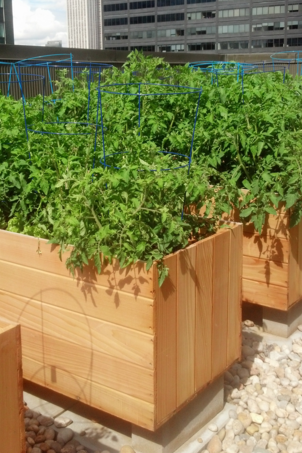Hotels Design Functioning Gardens to Cater to New Trends
Hotels Design Functioning Gardens to Cater to New Trends
by Jena Tesse Fox | Jan 22, 2018
As guests demand fresher food that has been sourced locally (not to mention organically), hotels across the country are creating gardens and small farms to grow herbs and vegetables, and to even keep bees for honey. Best of all, even urban hotels are putting their rooftops to use and growing some basics for the kitchens below.
Creating these gardens and farms and making them—literally—fruitful can be more challenging than simply planting some seeds, as chefs and food-and-beverage teams often learn through experience.
Water, water everywhere...
At the Westin New York Grand Central, chef Brian Wieler created a garden for vegetables and herbs on the high-rise’s rooftop, but didn’t think about irrigating the soil. “The first year, it was me with a garden hose,” he said. “I'd have to spend about an hour-and-a-half up there every day to water the garden.” After that first year, the hotel installed an irrigation system with timers to make sure all of the plants get the right amount of water at the right time of day.
When executive chef Daven Wardynski created a garden with 15 raised beds on the fifth floor sundeck at the Omni Chicago Hotel, he also didn’t have an irrigation system during the project’s first year. “The tomatoes didn't perform very well because of that,” he said. When he transferred to the Omni Amelia Island resort in Florida, he had an opportunity to create a full farm as part of the resort’s Sprouting Project—and remembered to create an irrigation system first. He decided to create two aquaponic lines rather than a hydroponic line because aquaponic systems include live fish that supply natural nutrients to the plants.
At Terranea Resort in Rancho Palos Verdes, Calif., executive chef Bernard Ibarra thought that he would have sufficient irrigation when he started building the resort’s Catalina View Gardens, but didn’t realize how quickly it could get out of control. During the garden’s first season, Ibarra would open the pipeline from a water tank up the hill to irrigate the soil for an hour—but would then get tied up in the kitchen and not be able to close the pipeline for six hours or so. “The place looked like a lake,” he said. “A better irrigation system was put in place and now we still open it manually, but because of the numerous pipes and the hose alongside the the growing rows, it's a lot easier to control.”
Evolving a Garden
When Wieler began planning the rooftop garden at the Westin, he tapped one of the hotel’s in-house carpenters from the engineering department to build the vegetable beds from white cedar wood. “It’s resistant to rot and several species of insects and things that can burrow in the wood and help to destroy them more quickly,” he explained. “I didn't want to put in any pressure-treated wood or the treated wood that people use outside. It's got arsenic and other chemicals and you really don't want to associate it with food. The pressure-treated wood that they sell in the lumberyards, wood that's got some sort of a green hue or tinge to it, that is actually soaked in chemicals to prevent pests and rot and things like that. So it's not something that you really want to utilize for your garden.”
Masons then put the beds up on risers made of paving bricks to help protect the integrity of the roof base, which itself is lined with small rocks (a “rock ballast roof”) to help with drainage and to handle the weight of the vegetable beds.
When Ibarra wanted to create the Catalina View Gardens at Terranea, he consulted owner Jim York to learn about designing an effective space. To prevent gophers from attacking the vegetables, Ibarra and his team installed chicken wire 1 foot under the ground and also as fencing surrounding the gardens. “For the most part, for the past four years, it’s been gopher-free,” he said.
The Omni Amelia Island, meanwhile, had an old greenhouse that Wardynski was able to repurpose for the Sprouting Project. “We had to replace the tarp and lay cement on the inside so it wasn't an earth floor,” he said. “There was not necessarily any engineer that was brought in to design the space; it was me with a post hole digger putting in an enclosure for our chickens or a post that we could level off so we can set beehives off the ground. It's just a continual process of evolving.”
Wardynski—who grew up on a farm in Michigan—also faced challenges in creating his Florida garden. “In Michigan, we grow lettuces in spring and summer,” he said. “When you try to grow lettuces here in the summer, it's an epic fail because it's too hot. Everything wants to go to seed and then die.”
Make a Garden Grow
Much like designing a lobby or restaurant, the hotel teams have been able to see what works and what doesn’t as they develop their gardens and farms, and adjust them as needed. “The sun and the wind have a big say in the way the vegetables grow,” Ibarra said. “It's an ongoing lesson because the weather changes at times and the sun doesn't always shine at the same times.”
Since the rooftop garden opened at the Westin, it has grown from four vegetable beds and four whiskey barrels (for herbs) to 12 beds and nine barrels. And over the years, Wieler learned how to take advantage of the rooftop locations, using shade from the surrounding buildings to protect more sensitive plants (like lettuce) that can be scorched in the summer heat. He also learned what crops are suitable for a rooftop and which are not: While zucchini and squash may be popular in the kitchens, the huge leaves make them impractical for a limited footprint. The Sprouting Project at the Omni Amelia Island also developed an apiary that started with two colonies of bees and eventually grew into 16 colonies, as well as a “barrel room” with 36 20-liter barrels that are filled with everything from cocktails to hot sauces made on-site to vinegar made from leftover wine.
And Wardynski isn’t done designing his farm. “This year, my hope is to move one of the fence rows back and lay in an area that can actually have beans and vine items,” he said, noting that squashes, corn and beans can “flourish” off each other as they grow.






